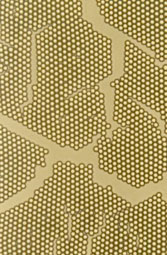Home > Press > R&D Profile: Physical Properties of Nanostructured Metal Coated Polymer Particles
 |
| The SEM image of 3.8ėm diameter monodisperse Ni/Au coated acrylic particle |
Abstract:
A nanoindentation-based flat punch technique has been developed to probe the physical properties of single Ni/Au coated polymer particles and the effect of nanoscale coating on the deformation capacity and fracture process of particles has been revealed.
R&D Profile: Physical Properties of Nanostructured Metal Coated Polymer Particles
Norway | Posted on March 30th, 2009Metalized and monodisperse polymer particles are increasingly used in developing new electrical packaging technology, such as Anisotropic Conductive Adhesives (ACA) in Flat Panel Displays (FPDs) and other applications to increase flexibility and hence the reliability of the electrical interconnects between components and wiring boards. The particles used in these applications usually consist of a polymer core in micron size and a Ni/Au coating in nanoscale. Some of the unique properties for the particles, such as size distribution, chemical compositions and mechanical properties, are very critical for achieving a reliable and low resistance connection. These applications often involve large deformation and the deformation capability and failure mechanisms of the particles should be quantified. Due to the spherical geometry and the material complexity involved, the characterization of individual micron-sized particles possesses great challenges.
In this study, we have developed a nanoindentation-based flat punch method to compress single particles. Testing of Ugelstad polystyrene-co-divinylbenzene particles with same chemical compositions but different diameters have shown that the particle compressive stress-strain behaviour is strongly size-dependent. The smaller the particle size is, the stiffer the particle behaves. Analyses indicate that the pre-load and adhesion during the flat punch test play a minor role on the size effect. A presence of a core-shell structure is a main contribution to the size effect. Recently, monodisperse Ni/Au coated acrylic particles which consist of an acrylic core of 3.8ĩm diameter, a nanoscale Ni inner layer with around 50nm thick and an Au outer layer with around 25nm have been systematically investigated using a wide range of experimental conditions. Through comparing the stress-strain behaviour of coated particles with that of uncoated ones, the effect of the Ni/Au coating has been studied and a three-stage deformation and fracture process of Ni/Au coated particles has been observed. The surface morphology of tested particles analysed by SEM further reveals the failure mechanisms of particles.
Initially the Ni/Au coating has a significant strengthening effect, where the deformation is mainly contributed by stretching the Ni/Au coating so the coated particle is harder than the uncoated one. Secondly, the effect of Ni/Au coating is significantly reduced when cracking of the Ni/Au coating and delamination between the Ni/Au coating and the polymer core occur. The critical deformation for the cracking and delamination of the metal coating is around 18% for these specific particles. In the third and last phase with a deformation above approximately 43%, the coated particle shows nearly identical behaviour as the uncoated one. The project was supported by the Norwegian Research Council via the NANOMAT program.
Overview Courtesy of Z. Zhang, NTNU, Norway
Z. Zhang and J. He, Norwegian University of Science and Technology (NTNU)Trondheim, Norway; H. Kristiansen, Conpart AS, Skjetten, Norway
####
Copyright © NSTI
If you have a comment, please Contact us.Issuers of news releases, not 7th Wave, Inc. or Nanotechnology Now, are solely responsible for the accuracy of the content.
| Related News Press |
News and information
![]() Researchers develop molecular qubits that communicate at telecom frequencies October 3rd, 2025
Researchers develop molecular qubits that communicate at telecom frequencies October 3rd, 2025
![]() Next-generation quantum communication October 3rd, 2025
Next-generation quantum communication October 3rd, 2025
![]() "Nanoreactor" cage uses visible light for catalytic and ultra-selective cross-cycloadditions October 3rd, 2025
"Nanoreactor" cage uses visible light for catalytic and ultra-selective cross-cycloadditions October 3rd, 2025
Discoveries
![]() Researchers develop molecular qubits that communicate at telecom frequencies October 3rd, 2025
Researchers develop molecular qubits that communicate at telecom frequencies October 3rd, 2025
![]() Next-generation quantum communication October 3rd, 2025
Next-generation quantum communication October 3rd, 2025
![]() "Nanoreactor" cage uses visible light for catalytic and ultra-selective cross-cycloadditions October 3rd, 2025
"Nanoreactor" cage uses visible light for catalytic and ultra-selective cross-cycloadditions October 3rd, 2025
Tools
![]() Japan launches fully domestically produced quantum computer: Expo visitors to experience quantum computing firsthand August 8th, 2025
Japan launches fully domestically produced quantum computer: Expo visitors to experience quantum computing firsthand August 8th, 2025
![]() Rice researchers harness gravity to create low-cost device for rapid cell analysis February 28th, 2025
Rice researchers harness gravity to create low-cost device for rapid cell analysis February 28th, 2025
|
|
||
|
|
||
| The latest news from around the world, FREE | ||
|
|
||
|
|
||
| Premium Products | ||
|
|
||
|
Only the news you want to read!
Learn More |
||
|
|
||
|
Full-service, expert consulting
Learn More |
||
|
|
||








